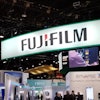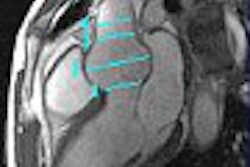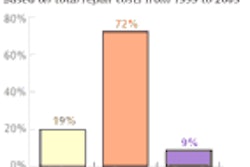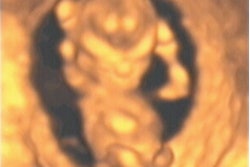VIENNA - Ultrasound-guided breast biopsies performed with a 14-gauge core needle are much more likely to require re-biopsy than those performed with a vacuum-assisted device, according to a large-scale analysis presented Monday at the European Congress of Radiology.
Researchers who retrospectively reviewed 13,582 biopsies from five centers in North America and Europe (Denver; Ottawa, Montreal, and Quebec City; and Nice, France) found that the most frequent reason for re-biopsy was discordance between the pathology results and the apparent radiological findings.
The data were presented by Dr. Nathalie Duchesne, head of breast imaging and intervention at the Ottawa Regional Women’s Breast Health Centre.
Earlier studies have sought to identify the factors contributing to re-biopsy rates, Duchesne said, but lacked sufficient size to produce significant results. Only 123 re-biopsies were performed over the four years reviewed in the latest study, with individual facility re-biopsy rates ranging from 0.02% up to 3.21%.
Of the 123 re-biopsies, 70% were performed because of discordant radiological and pathological findings. Fifteen percent of those patients had cancer that was missed in the first biopsy.
"The study underlines the importance of radiological-pathological concordance," Duchesne noted. "It is the legal responsibility of the radiologist to perform this correlation after the first biopsy."
Most of the re-biopsies were performed on masses in BI-RADS category 4 or 5, and in dense parenchyma. Lesion size was not statistically significant in the re-biopsy rate, Duchesne said. More experienced radiologists also had lower re-biopsy rates, although the difference didn’t achieve statistical significance.
The use of a 14-gauge core needle in the first biopsy was the most significant factor influencing the re-biopsy rate and greatly increased the chances for re-biopsy, Duchesne said.
"Given now that we do not accept a false-negative -- our tolerance is zero -- and given also the direct and indirect costs associated with a re-biopsy," Duchesne stated, "we have to ask ourselves: ‘Are vacuum-assisted devices a luxury or a necessity in ultrasound-guided breast biopsy?’"
The fact that vacuum-assisted devices cost 10 times more than core needles would present a dilemma for many in the audience, she acknowledged, given that they often practice in socialized medical systems. However, she suggested that changing social norms would warrant more frequent use of the more expensive technology.
"It is totally unacceptable in 2004 that a patient walks in the street with a benign diagnosis when instead she has a cancer," Duchesne said.
By Tracie L. Thompson
AuntMinnie.com staff writer
March 8, 2004
Related Reading
More breast markers available as usage becomes standard practice, August 26, 2003
Poor lesion visualization accounts for stereotactic biopsy failure, August 12, 2003Stereotactic core needle biopsy often misdiagnoses atypical ductal hyperplasia, July 11, 2003
New adjunctive breast techniques improve positive biopsy rates, February 25, 2003
Ultrasonography improves cancer screening of dense breasts, September 20, 2002
Copyright © 2004 AuntMinnie.com



















